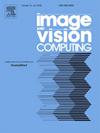SAVE: Encoding spatial interactions for vision transformers
IF 4.2
3区 计算机科学
Q2 COMPUTER SCIENCE, ARTIFICIAL INTELLIGENCE
引用次数: 0
Abstract
Transformers have achieved impressive performance in visual tasks. Position encoding, which equips vectors (elements of input tokens, queries, keys, or values) with sequence specificity, effectively alleviates the lack of permutation relation in transformers. In this work, we first clarify that both position encoding and additional position-specific operations will introduce positional information when participating in self-attention. On this basis, most existing position encoding methods are equivalent to special affine transformations. However, this encoding method lacks the correlation of vector content interaction. We further propose Spatial Aggregation Vector Encoding (SAVE) that employs transition matrices to recombine vectors. We design two simple yet effective modes to merge other vectors, with each one serving as an anchor. The aggregated vectors control spatial contextual connections by establishing two-dimensional relationships. Our SAVE can be plug-and-play in vision transformers, even with other position encoding methods. Comparative results on three image classification datasets show that the proposed SAVE performs comparably to current position encoding methods. Experiments on detection tasks show that the SAVE improves the downstream performance of transformer-based methods. Code is available at https://github.com/maxiao0234/SAVE.
SAVE:为视觉转换器的空间互动编码
变换器在视觉任务中的表现令人印象深刻。位置编码使向量(输入标记、查询、键或值的元素)具有序列特异性,有效缓解了变换器中缺乏排列关系的问题。在这项工作中,我们首先澄清,位置编码和额外的特定位置操作在参与自我关注时都会引入位置信息。在此基础上,现有的大多数位置编码方法都等同于特殊仿射变换。然而,这种编码方法缺乏向量内容交互的相关性。我们进一步提出了空间聚合矢量编码(SAVE),它采用过渡矩阵来重组矢量。我们设计了两种简单而有效的模式来合并其他矢量,每种模式都是一个锚点。聚合向量通过建立二维关系来控制空间上下文连接。我们的 SAVE 可以在视觉转换器中即插即用,甚至可以与其他位置编码方法一起使用。在三个图像分类数据集上的比较结果表明,所提出的 SAVE 的性能可与当前的位置编码方法相媲美。检测任务的实验表明,SAVE 提高了基于变换器方法的下游性能。代码见 https://github.com/maxiao0234/SAVE。
本文章由计算机程序翻译,如有差异,请以英文原文为准。
求助全文
约1分钟内获得全文
求助全文
来源期刊

Image and Vision Computing
工程技术-工程:电子与电气
CiteScore
8.50
自引率
8.50%
发文量
143
审稿时长
7.8 months
期刊介绍:
Image and Vision Computing has as a primary aim the provision of an effective medium of interchange for the results of high quality theoretical and applied research fundamental to all aspects of image interpretation and computer vision. The journal publishes work that proposes new image interpretation and computer vision methodology or addresses the application of such methods to real world scenes. It seeks to strengthen a deeper understanding in the discipline by encouraging the quantitative comparison and performance evaluation of the proposed methodology. The coverage includes: image interpretation, scene modelling, object recognition and tracking, shape analysis, monitoring and surveillance, active vision and robotic systems, SLAM, biologically-inspired computer vision, motion analysis, stereo vision, document image understanding, character and handwritten text recognition, face and gesture recognition, biometrics, vision-based human-computer interaction, human activity and behavior understanding, data fusion from multiple sensor inputs, image databases.
 求助内容:
求助内容: 应助结果提醒方式:
应助结果提醒方式:


